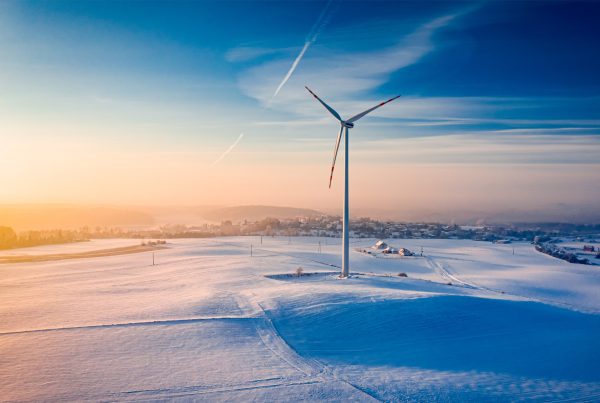Romanian agriculture is undeniably flourishing. The excellent soil - we are part of Europe's so-called chernozem belt -, the generous areas suitable for agriculture, favorable weather conditions, water resources, tradition in agriculture, but also access to top technology, all these are factors that favor a successful agriculture. Increasingly higher and more sophisticated feed requirements call for the use of fertilizers, as they increase the chances of high yields and quality. Some of the most important categories are nitrogen-based fertilizers, in the production of which natural gas is used in significant quantities.
Thus, national resources, together with the accumulated technical experience, well-trained people could make Romania produce its own fertilizers, which would mean better prices for Romanian farmers, security of supply and reducing the trade deficit.
NATURAL GAS PUSHES THE START BUTTON FOR RICH HARVESTS
Because nitrogen is the building block of the plant world, nitrogen fertilizers are the most important group of products used in agriculture.
To production In these, nitrogen from the air mixes with hydrogen from natural gases at high temperatures and pressures to create ammonia. About 60% of the natural gas is used as feedstock, and the rest is used to fuel the synthesis process. Ammonia is used to produce nitric acid, with which it is then mixed to produce nitrate-based fertilizers such as ammonium nitrate (AN). Ammonia can also be mixed with liquid carbon dioxide to create urea. Both products can then be mixed with water to form the UAN (urea ammonium nitrate) solution.
ROMGAZ TAKES FIRST STEPS TO ACQUIRE AZOMURES
The largest fertilizer producer, AZOMUREȘ, stopped its production in 2024 due to high natural gas prices, with a partial rebound. But the future looks bright for the company and the Romanian fertilizer market. In February 2025, ROMGAZ has started necessary to take over the AZOMUREȘ plant, the largest producer of chemical fertilizers and the largest gas consumer in Romania. This initiative is supported by Marcel Ciolacu, Prime Minister of Romania, who said on the occasion:
"ROMGAZ wants to take over the largest producer of chemical fertilizers in the country. I fully support the project, it is the best solution for our farmers".
The Energy Ministry is also involved in this essential step for the country. Sebastian Burduja, Minister of Energy, said:
"We have mandated ROMGAZ - a leading company in the portfolio of the Ministry of Energy and the largest gas producer in Romania - to evaluate the takeover of the largest Romanian agricultural fertilizer production plant, Azomures. ROMGAZ has already published a notice in the Electronic Public Procurement System (SEAP) for consultancy services in the evaluation, negotiation and acquisition of Azomures' assets".
According to the Energy Minister, the move is aimed at diversifying ROMGAZ's portfolio and expanding into a production segment that will give Romanian gas a higher added value, including by capitalizing on the resources extracted from the Neptun Deep project in the Black Sea.
AZOMURES, NEXT CHAPTER
AZOMURES is not only the most important producer of fertilizers, it is also the most largest consumer of natural gas in the country. In July 2024, the chemical combine announced that it would resume production of urea (a type of fertilizer) on one of the two lines after two years of inactivity in this segment.
The company is the only urea producer in the country. With the takeover by ROMGAZ, AZOMUREȘ will also be able to use gas from the Black Sea, produced by the Neptun Deep project. The first molecules are expected in 2027, and ROMGAZ is one of two companies involved in the production, which would mean that Romanian industry could soon benefit directly from the country's important resources.
Would the takeover solve the problem of fertilizer imports? Yes, but only partially. This is because there are many types of products in demand on the market, including organic fertilizers. But even these can be produced domestically. One example is Black Sea Oil&Gas Company, which, in partnership with Unigrains Tradeing, a large agricultural producer in Constanta County, is to develop a project for the production of biofuels and organic fertilizers. In time, as the production of fertilizers produced in Romania increases, we can hope for an acceleration of research - so necessary in the field of biotechnologies - which could, in time, lead to an ever-growing enrichment of the local portfolio of plant nutrition products.
AZOMURES is, according to economedia.ro, the only industry unit still operational. The publication points out that there are six other units, formerly in the Interagro group, two of which are being put up for sale by the liquidator and three of which are being bought by the Pambac Bacău group. The latter have not restarted so far, although they were purchased - two of them - several years ago.
TRADE DEFICIT - IMPROVED BY DOMESTIC FERTILIZER PRODUCTION For chemical products, which include fertilizers, Romania has the largest trade deficit of all industrial branches - over 3 billion euro. According to europlibera.org, fertilizer imports cost Romania nearly €737 million in 2024.
The restart of AZOMUREȘ and other fertilizer production units is all the more important as the expects an increase in taxesEU-wide for products from Russia and Belarus. As most of Romania's fertilizers come from Russia, this means Romanian farmers will have to bear higher costs or simply stop applying fertilizer. As less fertilizer means lower production, the country's food security is at stake. We can only look with hope to the Black Sea and the resources exploited there.
Sources:
- fertilizerseurope.com - Read the article
- hotnews.ro - Read the article
- zf.ro - Read the article
- economica.net - Read the article
- euractiv.ro - Read the article
- blackseaog.com - Read the article
- economedia.ro - Read the article
- europalibera.org - Read the article
- agrointel.ro - Read the article









